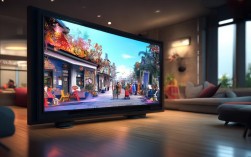Television has been a cornerstone of modern entertainment and information dissemination for decades, shaping culture, influencing public opinion, and serving as a window to the world. Its evolution from a bulky, black-and-white box to sleek, smart, high-definition screens reflects not only technological advancement but also changing human lifestyles and preferences. This article explores the history, impact, and future of television, offering insights into its enduring relevance in the digital age.

The Evolution of Television: From Analog to Digital
The journey of television began in the early 20th century, with mechanical television systems emerging in the 1920s. However, it was the introduction of electronic television in the 1930s, pioneered by inventors like Philo Farnsworth and John Logie Baird, that laid the foundation for modern broadcasting. The post-World War II era saw television rapidly enter households, initially as a luxury item but soon becoming a staple in middle-class homes.
The shift from black-and-white to color broadcasting in the 1960s revolutionized viewer experience, making content more vibrant and engaging. By the 1980s and 1990s, cable and satellite television expanded channel options, offering specialized content ranging from news and documentaries to sports and movies. The 21st century marked another leap with the advent of digital television, which improved picture and sound quality while enabling features like electronic program guides (EPGs) and interactive services.
Today, smart TVs, internet Protocol television (IPTV), and streaming platforms have further transformed the landscape. These technologies allow on-demand access to global content, blurring the lines between traditional broadcasting and digital media. Below is a table summarizing key milestones in television history:
| Era | Technological Advancement | Impact |
|---|---|---|
| 1920s-1930s | Mechanical and electronic TV | First public broadcasts; limited adoption |
| 1950s-1960s | Color television | Enhanced viewer experience; mass popularity |
| 1980s-1990s | Cable and satellite TV | Specialized channels; wider content access |
| 2000s-Present | Digital and smart TV | On-demand streaming; internet integration |
The Cultural and Social Impact of Television
Television’s influence extends far beyond entertainment; it has played a pivotal role in shaping cultural norms, driving social change, and fostering global connectivity. News broadcasts, for instance, have kept the public informed about major events, from the moon landing to the COVID-19 pandemic, often shaping collective memory and response.
Documentaries and educational programs have also contributed to societal awareness, shedding light on issues like environmental conservation, human rights, and public health. For example, the BBC’s Planet Earth series not only showcased the planet’s biodiversity but also inspired conservation efforts worldwide. Similarly, talk shows and dramas have addressed taboo topics, sparking conversations about mental health, gender equality, and racial justice.
However, television’s impact is not without controversy. Critics argue that excessive screen time, particularly among children, can lead to sedentary lifestyles and reduced attention spans. Additionally, the portrayal of violence, stereotypes, and unrealistic body images in some programs has raised concerns about their influence on behavior and self-perception. Regulators and broadcasters continue to grapple with these challenges, implementing content ratings and promoting diverse, inclusive storytelling.
The Future of Television: Trends and Innovations
As technology continues to evolve, television is poised to become even more integrated into daily life. Artificial intelligence (AI) and machine learning are already enhancing personalization, with algorithms recommending content based on viewing habits. Voice-controlled remotes and gesture-based interfaces are also making interaction more intuitive, particularly for users with disabilities.
Another significant trend is the rise of interactive and immersive experiences. Augmented reality (AR) and virtual reality (VR) are being explored to create "360-degree" content, allowing viewers to engage with shows in unprecedented ways. For instance, sports broadcasts now offer multiple camera angles and real-time statistics, while gaming shows enable audience participation through voting or live polls.
The convergence of television and social media is further blurring traditional boundaries. Platforms like Twitch and YouTube have turned passive viewing into interactive experiences, where audiences can chat with creators and influence content in real time. Meanwhile, 5G technology promises faster streaming speeds and lower latency, enabling seamless 4K and 8K content delivery even on mobile devices.
FAQs About Television
Q1: How has streaming changed television viewing habits?
A1: Streaming platforms like Netflix, Amazon Prime Video, and Disney+ have revolutionized television by offering on-demand access to vast libraries of content. Unlike traditional broadcasting, which follows fixed schedules, streaming allows viewers to watch what they want, when they want, often offline. This shift has led to binge-watching culture, shorter attention spans, and increased competition among providers to produce exclusive, high-quality shows. Additionally, streaming has globalized content, making international series more accessible and fostering cross-cultural appreciation.
Q2: Is television still relevant in the age of smartphones and social media?
A2: Yes, television remains highly relevant, though its role has evolved. While smartphones and social media cater to short-form, bite-sized content, television excels in delivering immersive, long-form storytelling and live events, such as sports, award shows, and breaking news. Smart TVs, which integrate streaming apps, have bridged the gap between traditional and digital viewing, ensuring television stays central to home entertainment. Moreover, the communal experience of watching TV—whether with family or during live events—continues to hold unique value in an increasingly fragmented media landscape.
In conclusion, television has come a long way since its inception, adapting to technological shifts and societal changes while retaining its status as a powerful medium. As it continues to evolve, television will likely remain an integral part of how we consume information, connect with others, and experience the world.











